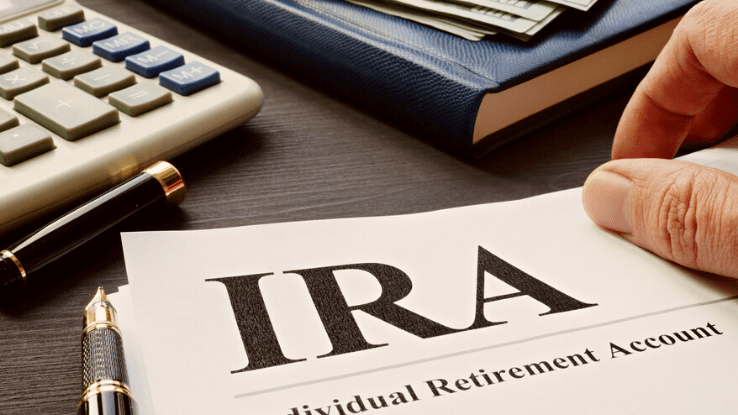Does It Make Sense to Continue to Contribute to Ira After Retirement

If you live in the USA, you probably already know about Traditional IRAs and have seen countless advertisements on Precious Metals IRAs, but have you heard of Crypto IRAs?
Individual retirement accounts (IRAs) are tax-advantaged vehicles designed for long-term savings and investment to build a nest egg for one's post-career life. While some IRAs are available through your employer, the two most common ones are designed for investors to use on their own. The first is the traditional IRA, established in 1974, while the other is its younger cousin, the Roth IRA, introduced in 1997 and named for its sponsor, Sen. William Roth.
While these accounts are similar, they differ in some key ways — primarily dealing with tax deductions (do you want to owe the IRS now or later?), accessibility of funds, and eligibility standards.
Understanding all the distinctions is crucial in deciding which IRA is the better choice for you.

Unlike a stock-based IRA account, a Crypto IRA uses a Crypto Exchange Account instead of a standard stock brokerage account and you can also have a Traditional, a Roth IRA or both.
You may maintain both a traditional IRA and a Roth IRA, if your total contribution doesn't exceed the Internal Revenue Service (IRS) limits for any given year, and you meet certain other eligibility requirements.
The IRS limit for both 2021 and 2022 is $6,000 for both the traditional and the Roth IRA combined. If you're aged 50 or older, a catch-up provision allows you to put in an additional $1,000, for a combined total of $7,000.
The key here is that on a Traditional IRA you will pay taxes on the income you contribute and earn when you withdraw the money during retirement. You can also receive a tax deduction on your income taxes.
How Do They Differ From Roth IRA?

On a Roth IRA, your contributions are from income already taxed, so your investment(s) can grow tax-free, and withdrawals are not taxed if you meet certain conditions.
Roth IRAs are ideal for those who are in a lower tax bracket now. Millennials are well-positioned to take advantage of a Roth IRA's tax benefits and tax-free growth. You don't get a tax deduction when you contribute to a Roth IRA. This means it doesn't lower your AGI (Adjusted Growth Income) that year.
The other condition regarding a Roth IRA, is that there are certain income limits enacted by the IRS to be able to contribute. The good news is your withdrawals from your Roth IRA during retirement are tax-free! That's because you paid the tax bill upfront, so you don't owe anything on the back end.
Roth IRAs have income-eligibility restrictions. In 2021, singles must have a MAGI (Modified Adjusted Growth Income) of less than $140,000, with contributions being phased out starting with a MAGI of $125,000. Married couples must have modified AGIs of less than $208,000 to contribute to a Roth, and contributions are phased out starting at $198,000.
These limits increase for the 2022 tax year. The MAGI for single filers maxes out at $144,000 and begins to phase out at $129,000 while the MAGI range for married couples filing jointly is $204,000 to $214,000.
You can contribute to the tax year 2021 IRA until April 15th of 2022.
To learn more, see our article on What's Different Between a Traditional IRA and Roth IRA?
What About Crypto Roth IRAs?

All the above also applies to Crypto IRAs.
Since most who are investing in crypto are doing so with income funds that have already been taxed, it makes sense to invest them directly into a Crypto Roth IRA and allow them to grow tax-free.
Of course, if your personal MAGI exceeds the above-mentioned limits, then you can either rollover an existing IRA to a Crypto Roth IRA or you will need to open a Traditional IRA, which still allows future tax savings since at retirement you should be in a lower tax bracket.
How Do They Work?

Recently we spoke to three of the top Crypto IRA brokerages on the market, ALTO, iTrustCapital and Choice by Kingdom Trust. Each of these offers similar features, trading fee structures, good customer service and have no annual fee.
Each of these companies offers a similar variety of cryptocurrencies, whereas some offer more variety and others offer previous metals and NFTs as well. (In the future we can do an in-depth review of each).
For now, we recommend navigating to each site and reviewing what their asset selections and fees are.
- Take some time to learn about Bitcoin, Ethereum and other altcoins. Study their whitepapers and performance just like you would a stock. Coingecko.com is a great research resource.
- Once you've reviewed and decided which company you feel most comfortable with, you can open an account directly or fill out a rollover form to move an existing IRA or old 401k over.
- Once your account is setup and funds are deposited, you're ready to build your portfolio just like a stock account, all the tools are provided.
- Start simple: Bitcoin, Ethereum and a few large market caps assets should make up the bulk of your long-term growth portfolio.
- Continue to study and learn.
- Contribute using dollar cost average deposits throughout the year to build-up your portfolio.
In summary, a crypto IRA should be part of everyone's arsenal of investment diversification. It's safe and will continue to mature and grow throughout the years. Always do your own research.
Source: https://www.askmoney.com/investing/what-is-a-crypto-ira?utm_content=params%3Ao%3D1465803%26ad%3DdirN%26qo%3DserpIndex&ueid=7b5101d1-b919-4915-b6c1-2b4db16cbee8
0 Response to "Does It Make Sense to Continue to Contribute to Ira After Retirement"
Post a Comment